9 Hands-On Strategies for Improving Decoding Skills
Even when students can decode words, that doesn't always mean they empathize the text on the page. In fact, as students go older, many may yet not take the fluency and the instant retrieve they need to brand progress and—more importantly—relish reading.
When we tin help kids add together a visual component to their learning, we can assist kids become more fluent readers. Here are nine classroom activities that tin can aid struggling readers improve their decoding skills, use more imagery and get stronger readers.
1. Hide-and-Seek Words
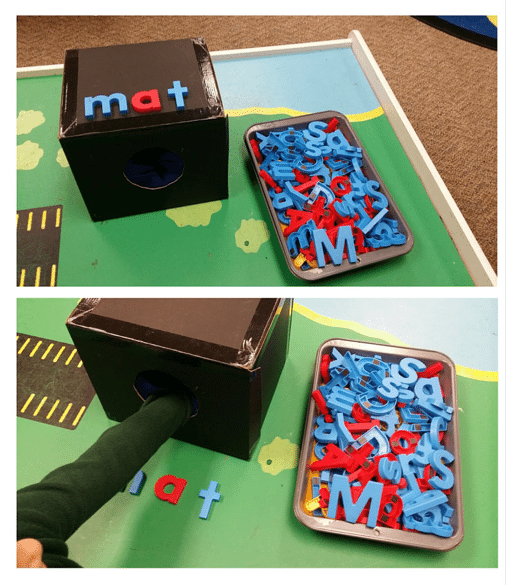
What it teaches:
Alphabetic character recognition, alphabetic character sounds, and sound blending
How to practice information technology:
Kids beloved this action that turns a guessing game into a reading game. For the offset level, the teacher places a single letter into the mystery box. Children accomplish into the box and try to picture the unique letter in their heed. They feel the lines and curves and use those tactile clues to bring to mind an image of the letter, followed past its name.
To use this game with kids who are working on sounding out words, you can have things up a level. Select a list of words ahead of fourth dimension and preview that listing with your students. As yous preview the words, ask each student to "run into" the give-and-take in their head. Put the letters of each give-and-take into the box every bit a whole give-and-take and secure the messages (in order) to the bottom of the magic box with Velcro or magnets. First inquire the pupil to discern the word in the box. Then remove the word and inquire the student to try to recall the image he created when you reviewed the words as a group.
two. Describe Your Words
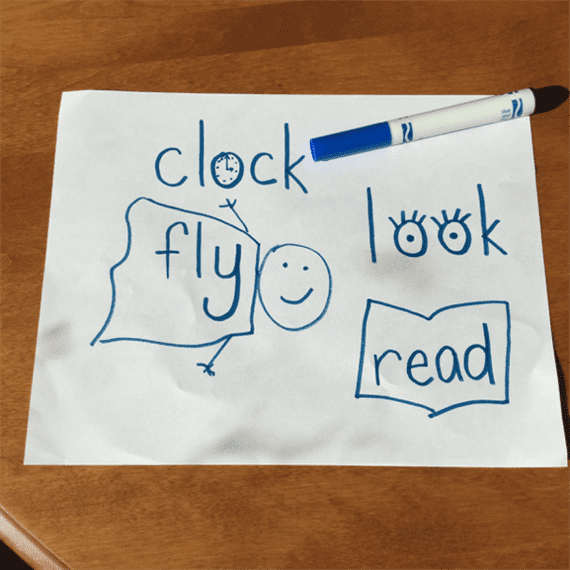
What it teaches:
Discussion patterns, spelling patterns
How to exercise information technology:
Whatsoever time you tin can work an epitome into reading education, your student has a better take chances of retaining data. People call up pictures. When y'all are introducing new words to students, ask them to create an paradigm that has meaning to them that goes with the word they're learning. Fifty-fifty creating an image in their caput has benefit, but asking them to depict an image around a discussion on paper can be more than fun—and more valuable.
3. Pool Noodle Discussion Play
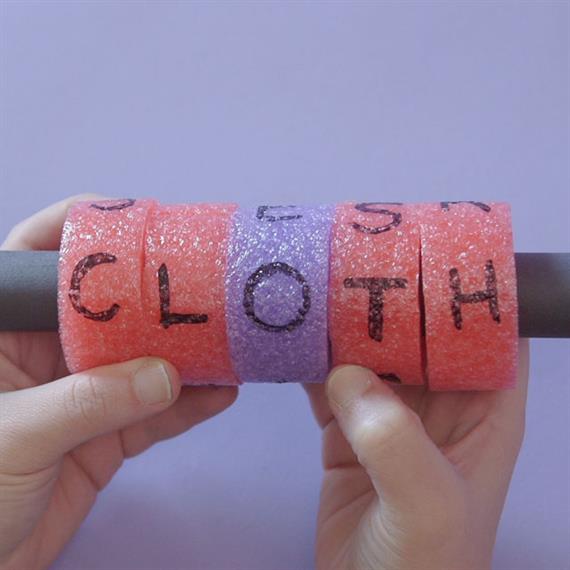
What it teaches:
Blending and segmenting words
How to exercise it:
How much fun is it to use pool noodles to teach the fundamental skills of blending and segmenting words? Blending and segmenting are foundational skills that pb to the full-on decoding of words. Write individual letters, or even multiple-letter give-and-take parts, on pool noodles. Ask kids to starting time with the puddle noodle pieces spread out and to say the sound on each pool noodle piece. Equally your students slide the noodles closer together, they say the discussion sounds closer together, ending when they say a total give-and-take. You lot tin detect more information on how to create puddle noodle words hither. (Hint: It would be piece of cake to add an imagery component to this activity by asking kids to create a meaningful picture in their caput for each word they piece of work with.)
4. Build a Bead Slide
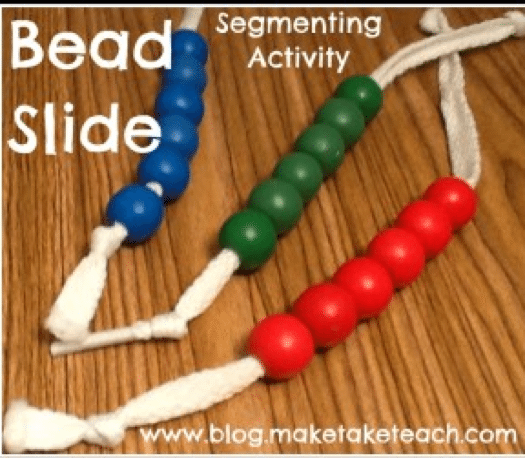
Source: Make Have Teach
What it teaches:
Phonemic awareness, blending and segmenting words
How to do it:
Perfect for small-grouping teaching, a "dewdrop slide" can make phonemic awareness more concrete for children who are learning to read—and information technology gives them something to do with their hands. As children move the beads from one end of the shoelace to the other, they practice phoneme segmentation, or breaking downward words into the specific sounds that make up the words. You lot can make the slides for the children, or you can accept them make their own bead slide. There's a great video about how to use a dewdrop slide on the Make, Take & Teach website.
5. Window Writing
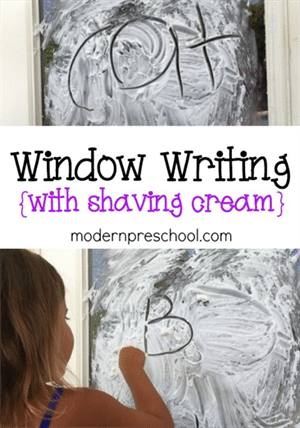
Source: ModernPreschool
What information technology teaches:
Motor-memory, blending, segmenting, phonological awareness
How to do information technology:
There's a difference betwixt putting little tiny letters together on paper and writing gigantic words with your whole arm. When you lot apply those bigger muscles, your brain gets different messages. For many students, information technology means your brain gets better messages. Window writing can be a fun way for students to explore words and word parts. Some teachers pull out the shaving foam and ask students to write words on the windows. Others take kids write words in shaving cream right on students' desks. (Bonus: Your classroom will smell super-clean afterwards the action. Exist sure to selection a shaving cream olfactory property you're willing to live with for the remainder of the day!)
Other teachers hand out Vis-à-Vis pens or dry-erase markers and have kids write direct on the windows. The kids love how rebellious this feels! The fob is for students to write their words large so that they can activate those larger muscle groups. (Hint: Yous can add an imagery component to this activity too. Simply exercise activity number 2 merely with shaving cream instead!)
6. Movin' and Groovin'
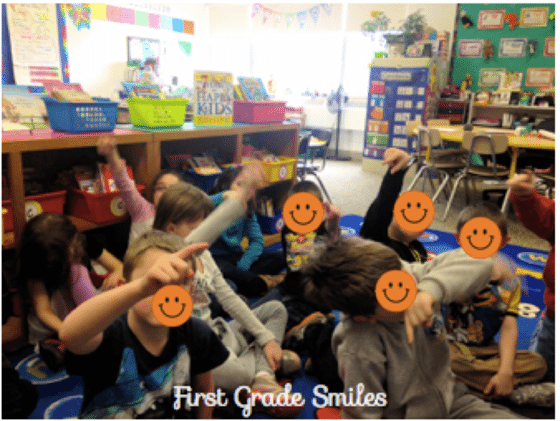
Source: Outset Course Smiles
What information technology teaches:
Fluency, motor retention, blending
How to do it:
When you lot can convince kids to go their whole body moving as you're teaching something, you increase the chances that what you're teaching is really going to stick. Using multisensory strategies to teach decoding tin can be really fun for kids too. Ask children to write words that they are practicing in the air. They can "print" or "utilise cursive" if they're former enough. Writing in the air engages those same large muscles as window writing and helps kids retain letter of the alphabet sounds and combinations. First Course Smiles has a fantastic list of kinesthetic educational activity activities you tin use to get kids moving while you're didactics specific reading strategies.
7. Game Time!
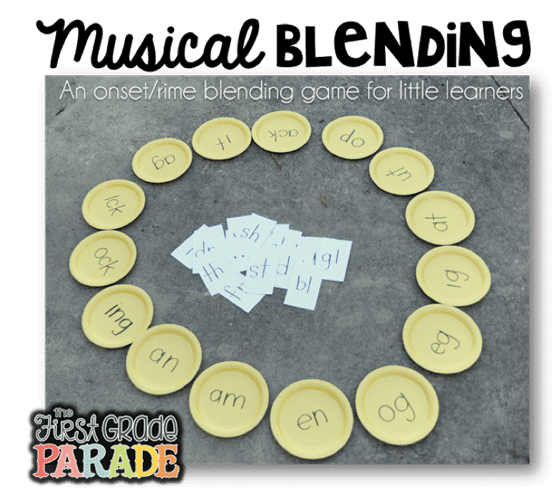
Source: The First Grade Parade
What information technology teaches:
Blending onsets/rimes
How to do information technology:
When yous tin make learning then much fun that the kids about forget that it's happening, you know you're in proficient shape. Games are the perfect manner to sneak in the learning. Whether it's Sight Discussion Bingo or Musical Blending (The First Class Parade's take on Musical Chairs), kids love games—fifty-fifty if information technology means they have to work a little chip. For the Musical Blending Game, kids hold a card in their easily and walk in a circumvolve around the pre-labeled plates. They end when the music stops and try to make a give-and-take. Kids who tin only alloy a nonsense word are out. Kids who alloy a real word keep playing. Extra tip: To bring imagery into this game, we recommend that students be asked to create (and possibly share) an image in their head for each real give-and-take that they blend.
8. Sing It loud, Sing It Strong
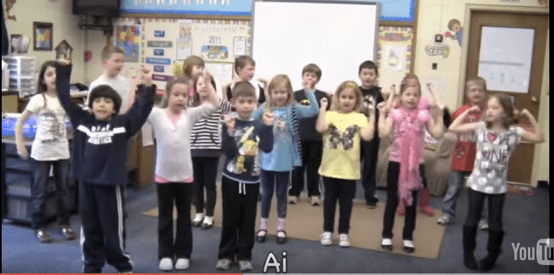
What it teaches:
Everything
How to do it:
Put any concept to music, and kids are almost guaranteed improve remember. It'south why we've been singing the alphabet song for generations. Motility and music together build pathways in the brain that are easier to follow. When you combine music and move with the concept that you lot're trying to teach, the concept tin can often coast forth on those pathways that the music and movement helped to build. We've included some of our favorite songs and chants that help teach decoding concepts beneath and we claiming you to make upwards your own.
Sound Blending Song
Phonics Trip the light fantastic toe
9. Break Out the Fly Swatters to Pause Up Long Words
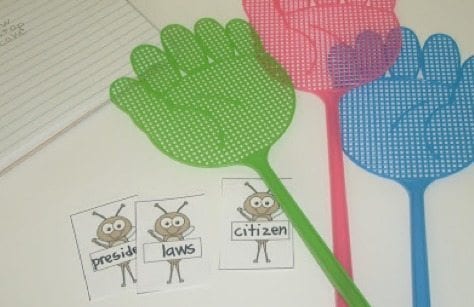
Source: Tertiary Grade Thinkers
What it teaches:
Segmenting, blending, syllabication
How to exercise it:
It's a footling-known truth that offset readers beloved to play with fly swatters. When I had them in my classroom (clean ones, of course!), kids were always drastic to play with them. For this game, students "slap" out the syllables of each give-and-take that they read. For case: "laws" gets 1 slap. "Pres-i-paring" gets three slaps. While we think it's pretty cute to swat the newspaper flies, you could also create a set of "swattable" cards that include pictures of the actual words that the kids are trying to decode. Then "pres-i-paring" might have a picture show of George Washington on the menu. (Are you sensing a theme? Building imagery into an action any way you can can make a difference for your kids who are struggling to recall those letter combinations and sounds.)
Did we miss something? What are your favorite strategies to teach decoding skills? Tell usa in the comments.
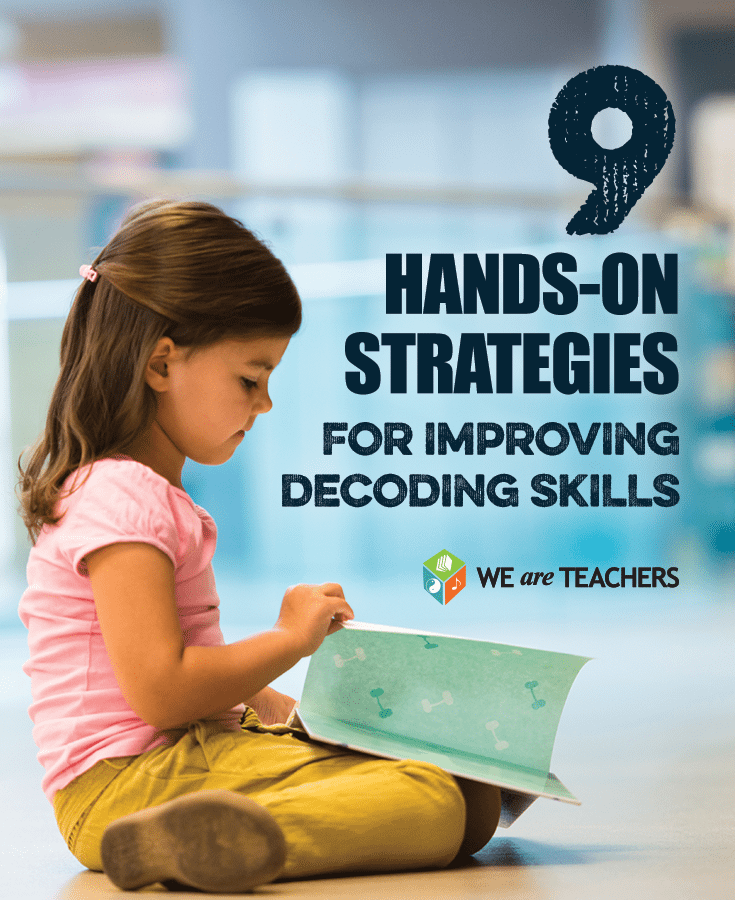
Source: https://www.weareteachers.com/cracking-the-code-9-hands-on-strategies-for-improving-decoding-skills/